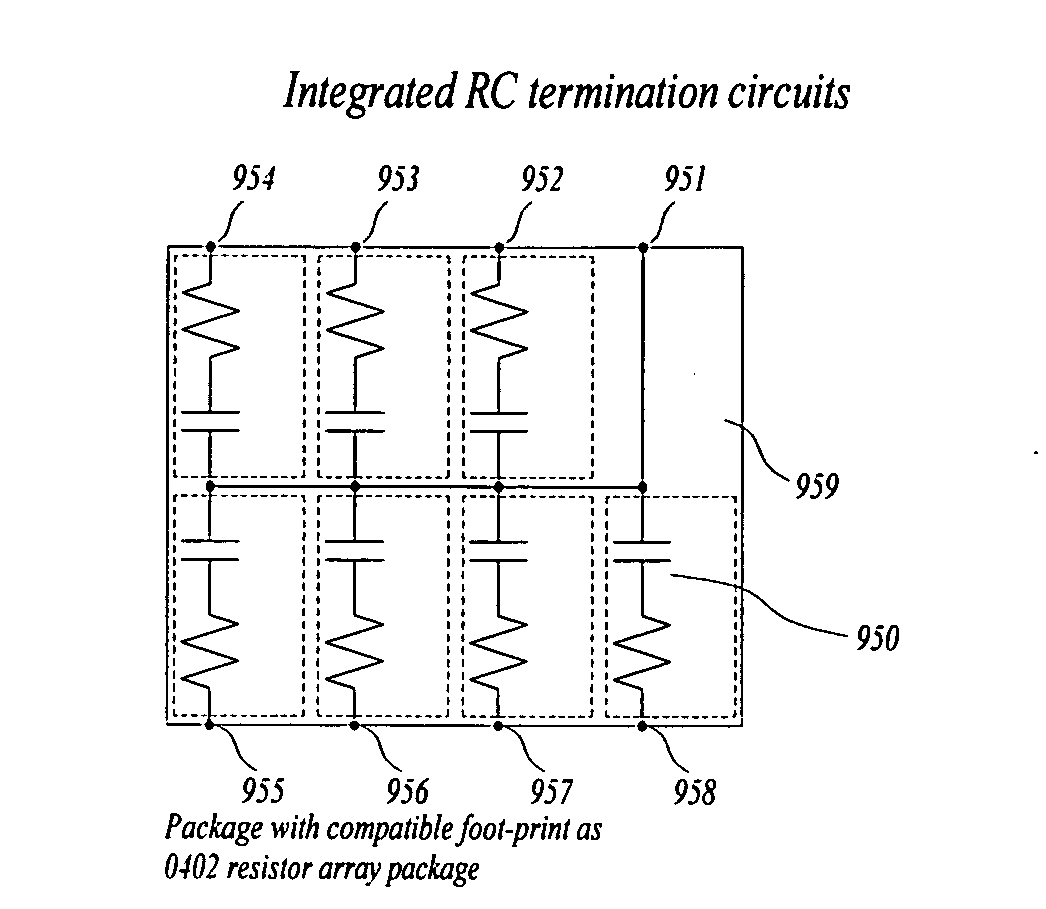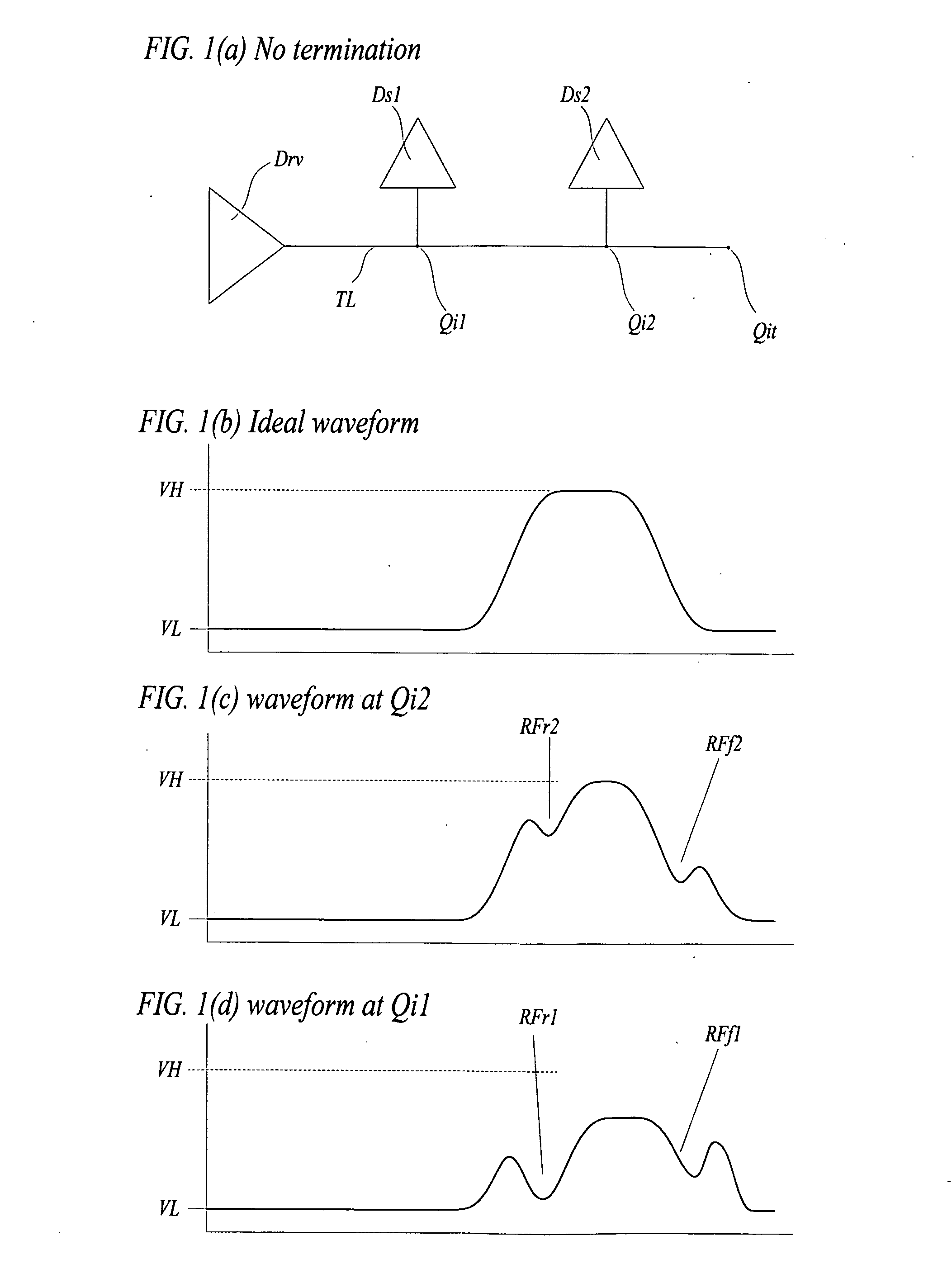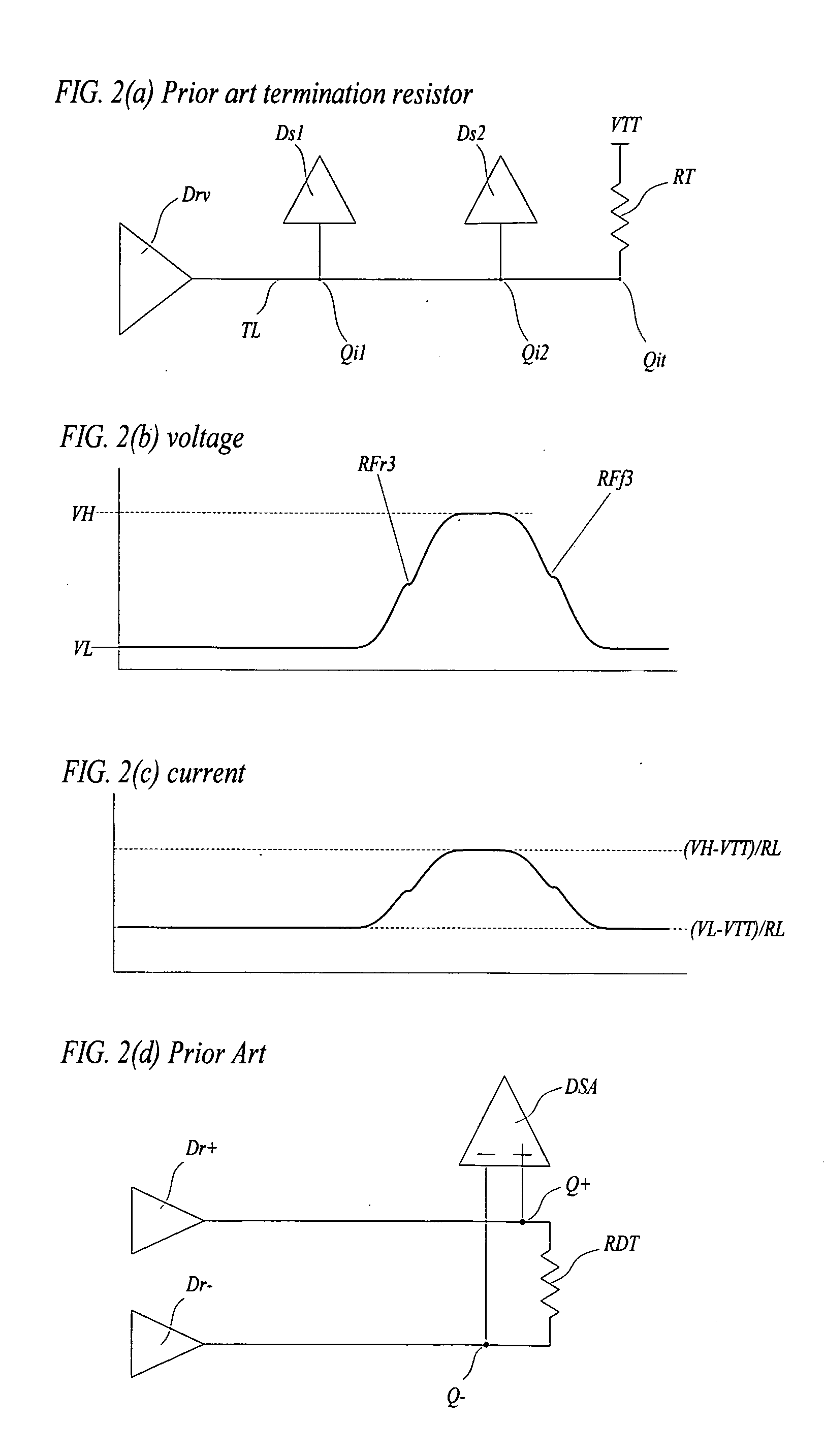Power saving termination circuits for dram modules
a termination circuit and dram module technology, applied in the direction of power consumption reduction, pulse technique, instruments, etc., can solve the problems of significant power consumption of termination resistors and additional power consumption, and achieve the effect of reducing the power consumed by termination circuits, less power, and reducing reflection effects
- Summary
- Abstract
- Description
- Claims
- Application Information
AI Technical Summary
Benefits of technology
Problems solved by technology
Method used
Image
Examples
Embodiment Construction
[0027]FIGS. 5(a-d) are simplified symbolic diagrams illustrating the operation principles of RC termination circuits. FIG. 5(a) shows a driver (Drv) driving an electrical wire (TL) that is connected to two sensors (Ds1, Ds2) at two different points (Qi1, Qi2). The end point (Qit) of the electrical wire (TL) is connected to a resistor (RTc) that is connected in series with a capacitor (CT) while connecting to a voltage source (VTT). The voltage of this voltage source (VTT) can be the same as the termination voltage of prior art termination resistors; it also can be a different voltage. We will call these types of termination circuits that comprise at least one capacitor and one resistor connected in series as “RC termination circuits”. The RC termination circuits are less sensitive to the voltage values of voltage sources than prior art termination resistors. This circuit shown in FIG. 5(a) is nearly identical to the circuit in FIG. 2(a) except that the termination resistor (RT) in F...
PUM
 Login to View More
Login to View More Abstract
Description
Claims
Application Information
 Login to View More
Login to View More - R&D
- Intellectual Property
- Life Sciences
- Materials
- Tech Scout
- Unparalleled Data Quality
- Higher Quality Content
- 60% Fewer Hallucinations
Browse by: Latest US Patents, China's latest patents, Technical Efficacy Thesaurus, Application Domain, Technology Topic, Popular Technical Reports.
© 2025 PatSnap. All rights reserved.Legal|Privacy policy|Modern Slavery Act Transparency Statement|Sitemap|About US| Contact US: help@patsnap.com



